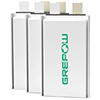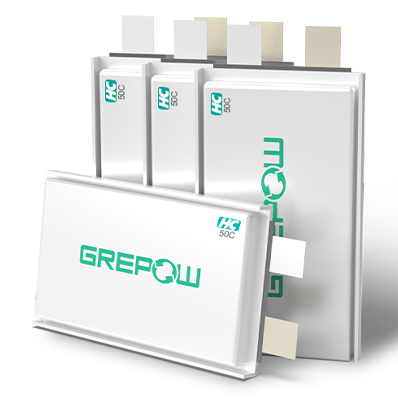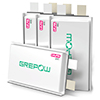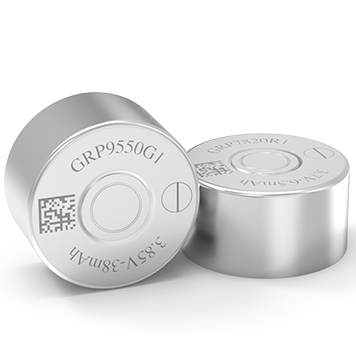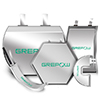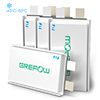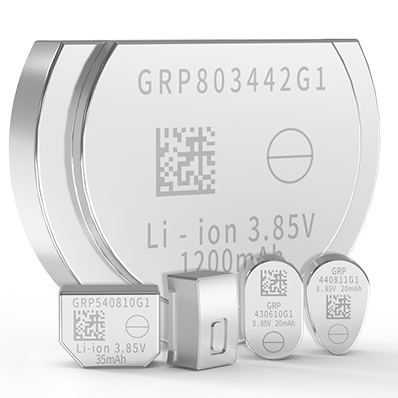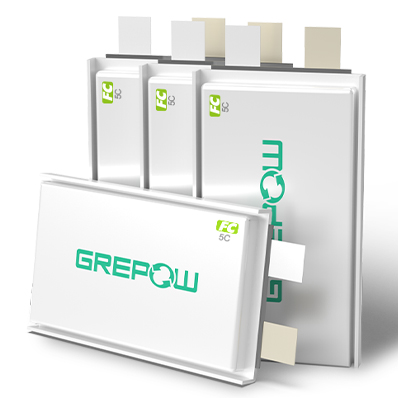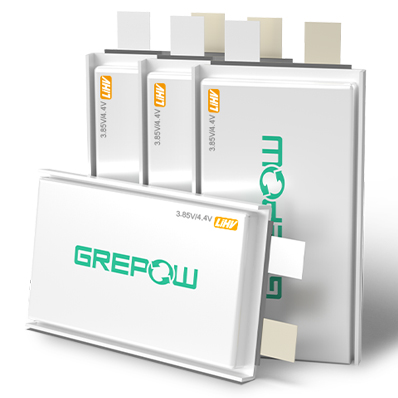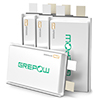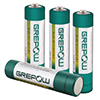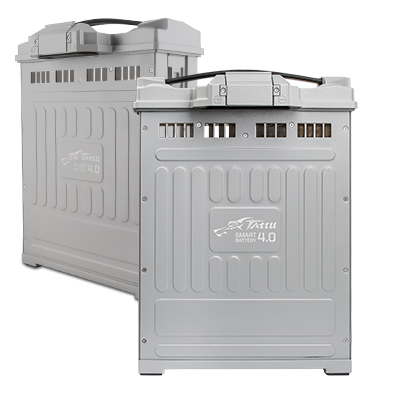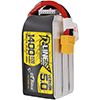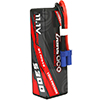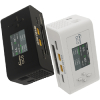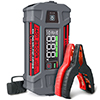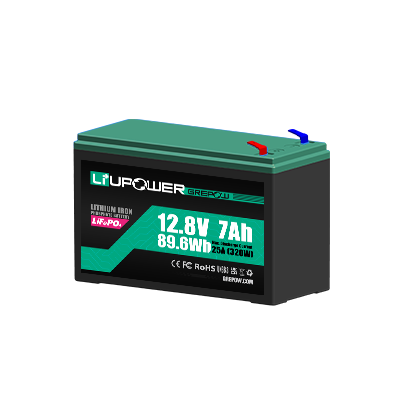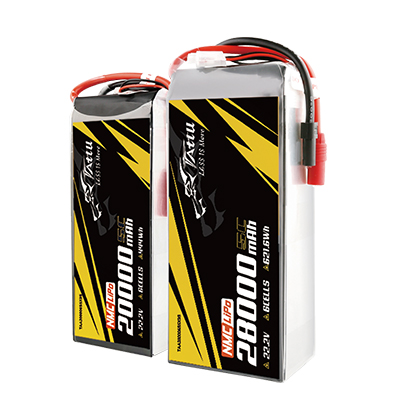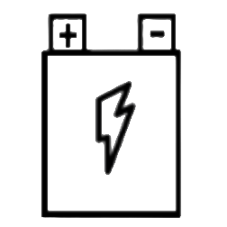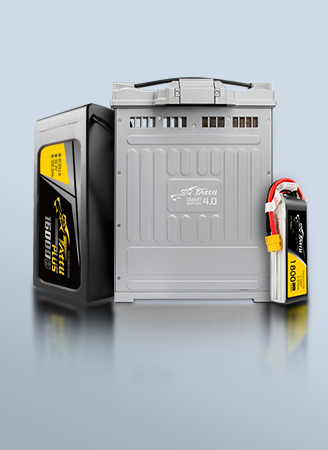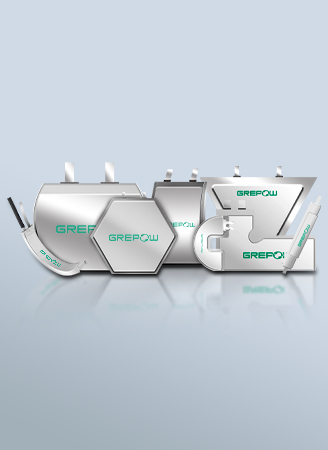What is the Best lithium Battery for Cold Weather?
Low-temperature lithium-ion battery encompasses a group of three kinds of batteries: 18650 lithium-ion, soft polymer lithium-ion, and phosphate lithium-ion. Hence, it is advisable to judge which type of low-temperature is best according to one’s application, for each type of low-temperature battery has its advantages and disadvantages. We will explain which lithium-ion batteries are best for low temperatures in this article.
What are low-temperature lithium-ion batteries?
Low-temperature lithium-ion batteries are a kind of lithium-ion battery that can work normally under extremely low temperatures. The three types of low-temperature lithium-ion batteries are distinguished by the special materials and processes used in making them suitable for sub-zero cold environments.
These lithium-ion batteries are especially employed due to their advantages of a lightweight, high specific energy, and long life under the cold temperatures. Low-temperature lithium-ion batteries are widely used in special weaponry, aerospace, vehicle-mounted equipment, polar research, cold-zone rescue, electrical communication, public security, medical electronics, railways, ships, robots, and many other fields. Since low-temperature lithium-ion batteries are mainly used in special and industrial applications, they are not seen too frequently. They generally need to work normally in an environment of about -40℃, keep at more than 80% of the original discharge capacity while operating at a minimum of -50℃.
What type of low-temperature lithium-ion battery is best?
Soft low-temperature polymer lithium batteries
Soft low-temperature lithium-ion polymer batteries should have the best performance in low temperatures and are often used in smart wearable devices. These batteries can be manufactured to a certain shape and size according to the space remaining in the devices they power, which allows them to fully utilize a product’s space without it being a waste. Grepow's low-temperature LiPo batteries can be made to operate in low-temperatures between -50℃ to 50℃. They can achieve a lower internal resistance and break through the traditional discharge temperature limits of -20°C to 60°C. They are also able to discharge at over 60% efficiency at 0.2C and -40°C and discharge over 80% efficiency at 0.2C and -30°C. When charged at 20°C to 30°C by 0.2C, the capacity can maintain above 85% after 300 cycles. The batteries can be ready for mass production, and they have been widely used in special products. The thickness of Grepow low-temperature batteries can range from 0.4 mm to 8 mm and its width 6mm to 8 mm. We have over 500 special-shaped batteries to choose from, and they come in a variety of sizes, shapes, and capacities.
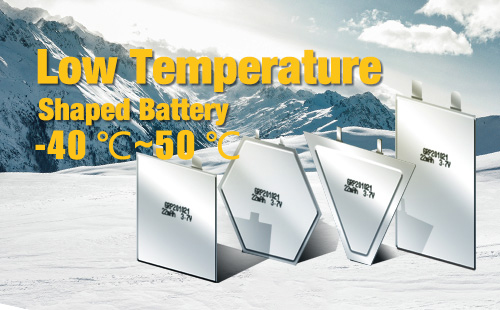
Grepow Special-shaped low-temperature batteries (Source: Grepow)
Low-temperature 18650 lithium batteries
Low-temperature 18650 lithium batteries are cylindrical in shape with a steel shell and fixed size. Because the electrolytes are liquid, the discharge performance of the battery varies greatly at lower temperatures. The range of use is also relatively small due to the fixed performance and size, but its production and manufacturing costs are relatively lower than those of other low-temperature lithium-ion polymer batteries.
Low-temperature phosphate (LiFeP04) lithium-ion batteries
Low-temperature phosphate lithium-ion batteries have two forms: one is a steel case, which is mostly used in new energy batteries while the other is a soft pack lithium iron phosphate battery whose performance is comparable to other LiPo batteries. The technology of lithium iron phosphate batteries is not as comparable to the other two low-temperature batteries, and the production and manufacturing requirements are high. Grepow’s low-temperature LiFePO4 batteries ensure a great low-temperature discharge performance through the addition of functional materials in the electrolytes, as well as excellent technology that has been developed over time. The discharge current at 0.2C is over 85% of its initial capacity at -20℃, at 85% at -30℃, and around 55% at -40℃.
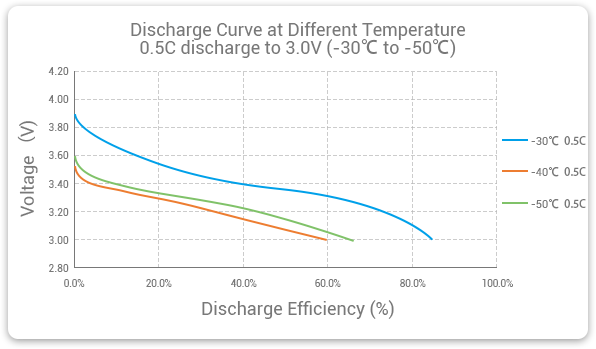
Grepow Low-Temperature Batteries Performance
What factors affect low-temperature lithium-ion batteries?
High melting-point solvents
Due to the existence of high melting-point solvents in the electrolyte mixture, the viscosity of electrolytes rises in low temperatures. When the electrolytes separate at low temperatures, there is a reduction in the transfer rate of lithium ions
SEI membrane
Under low temperatures, the SEI membrane of the negative electrodes will thicken, and its impedance will rise, resulting in a reduced conduction rate of lithium ions. Eventually, when the LiPo batteries are charged and discharged at low temperatures, a polarization will form that reduces the charge and discharge efficiency.
Anode structure
The three-dimensional structure of the anode material restricts the diffusion rate of lithium ions, especially at low temperatures. The discharge capacity of LiFePo4 batteries at -20℃ can only reach 67.38% of its initial capacity at room temperature while nickel-cobalt-manganese ternary batteries are able to reach 70.1%. The discharge capacity of lithium manganese acid batteries at -20℃ can reach 83% of its initial capacity at room temperature. If you are interested in our low-temperature lithium batteries, please don't hesitate to contact us! Email: info@grepow.com Grepow Website: Grepow Battery
Related Articles
-

Join Grepow at TAITRONICS & AIoT Taiwan 2024 to Discover New Innovations!
2024-10-19 -

What Batteries Are Used for AGVs and AMRs?
2024-09-30 -

How Are Smart Rings Powered?
2024-09-05
Related products
-

-45℃ Low Temperature LiFePO4 Battery
-
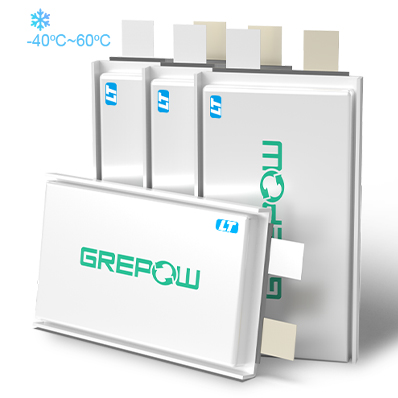
-40℃ to 60℃ Low Temperature Lipo Battery
-

GRP2452FL Rechargeable Lithium-Ion Button Cell Battery

